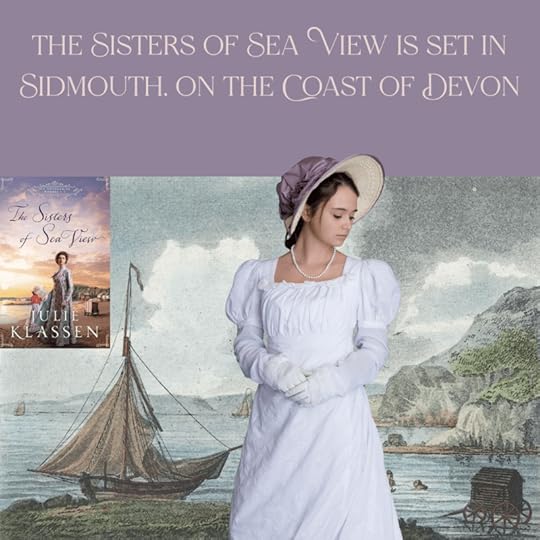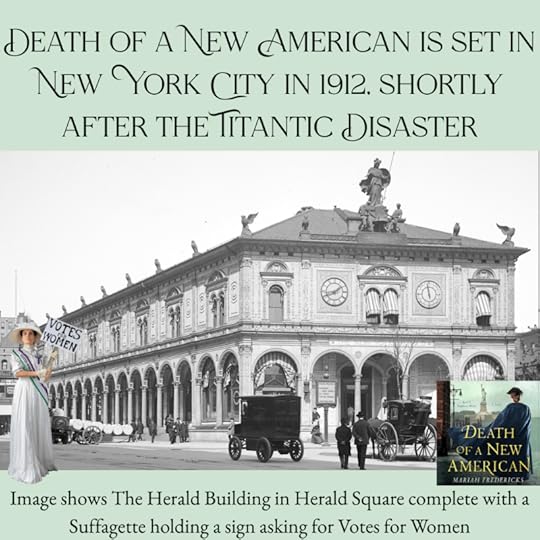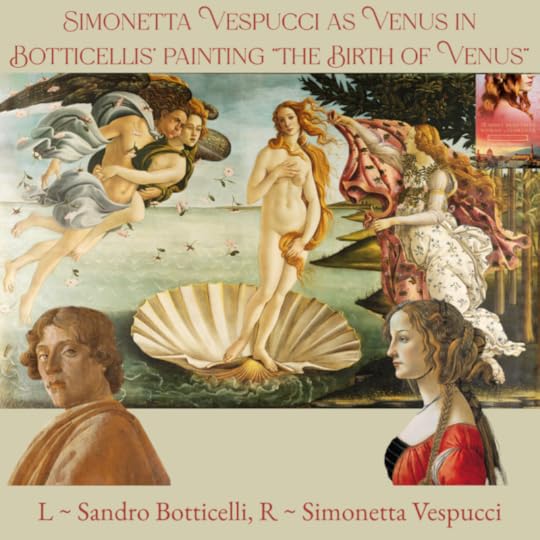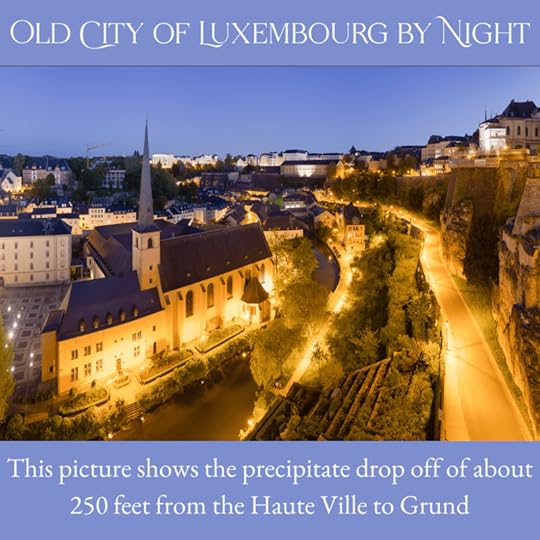Cynthia Sally Haggard's Blog: Cynthia Sally's Blog, page 3
September 22, 2025
How to Purchase a Suitcase in Luxembourg City
On arrival at the Hotel Perrin in Luxembourg, I discovered my large suitcase had a hole in it. True, it was not an enormous hole, but I was facing two flights on Thursday (Luxembourg to London and London to Manchester), and I was afraid that the hole might get worse and all my belongings would spill out.
I poked around on the web for a place in Luxembourg that sold suitcases at a reasonable price. The first shops to surface were leather goods shops in the Haute Ville. Obviously, I wasn’t going to go there as their prices would be eye-watering. Eventually, I found out that there was a place called Auchan. I looked it up and it seemed to be a shopping center in the Kirchberg neighborhood of Luxembourg (a high escarpment where all the EU buildings are located),and I would need a tram to get there. That seemed extremely doable, but what worried me was that I might have to spend as much as €400.
After lunch, I took myself there, accompanied by my broken suitcase so that I would have a good idea of the size of suitcase I would need to buy. (I need something concrete with me as I am very bad at estimating size.)
Of course, it was absolutely massive. Fortunately, I found a couple of women standing behind a counter and in my poor French I was able to ask them for a store that sold suitcases, and they told me I needed to go up a level. What I actually discovered was that Auchan is an enormous store located in the Kirchberg shopping center. The lower level is a grocery store, and the upper level (where I was) looked exactly like Costco! (For those of you who don’t live in the United States and are not familiar with Costco, I will just say that it is a chain of enormous stores, so large that it is like being in an aircraft hanger, where you buy everything in bulk at budget prices). Like Costco, Auchan had flat screen TVs, clothes, all kinds of things for the kitchen, dining room, bedroom.
Eventually, I found the aisle that sold suitcases. Of course, I couldn’t find exactly what I was looking for as Auchan doesn’t do soft-sided suitcases (which I prefer). So I had to buy one that was hard-sided. However, because I had my old suitcase with me, I was able to match the size and shape. The reason why I picked this particular one was that it was listed at €99.99 with a 30% discount. So I actually managed to get a new suitcase for €70! I checked the labels, and discovered it was made by Airport (which I had heard good things about online) and had had a number of tests done to ensure durability.
And so I bought it, thrilled that I had found something that seemed to be durable and well-made for a bargain price!
 The post How to Purchase a Suitcase in Luxembourg City appeared first on Cynthia Sally Haggard.
The post How to Purchase a Suitcase in Luxembourg City appeared first on Cynthia Sally Haggard.
September 19, 2025
THE SISTERS OF SEA VIEW by Julie Klassen
Set in 1819, just after Jane Austen’s death, THE SISTERS OF SEA VIEW takes up where SANDITON left off, with the issue of those increasingly fashionable sea-side resorts. Author Julie Klassen has great fun talking about sea-bathing and we even have one incident where a rogue wave sends a bathing machine tumbling into the sea.
So when the Summers sisters are left impoverished upon the death of their father, it seems extremely sensible for the eldest sister Sarah to open their seaside home in to visitors. However, instead of the elderly invalids they expect, many of their guests are eligible young men. And so begins this series of three novels, in which at least one sister will be taken to the altar.
I found this novel absolutely charming, and oh, what a wonderful idea Ms. Klassen had of resurrecting the odious Mrs Elton from Jane Austen’s Emma. In this volume, Mrs. Elton becomes one of those tiresome guests with a never-ending stream of “special requests” including an expensive dinner for all of the notables of Sidmouth, the village in Devon where the novel is set.
But what is so delicious is the way in which Mrs E. is exposed as a fraud. Emily Summers, the budding writer, actually contacts a woman in Surrey, where the Eltons reside. Imagine my astonishment on being told that this lady – I believe her name is Mrs Jane Lewis – lives at Hinchley Wood near Esher, Surrey!
Why am I surprised? Because it is an obscure corner of Surrey, where I happened to live during my teens. The Hinchley Wood I knew in the 1970s was a compact suburb adjacent to the much older (and prettier) village of Esher. Of course, Hinchley Wood came into being with the opening of its railway station in 1930, placing it on the Waterloo to Guildford line. After that, the place boomed with (according to Wikipedia) 750 houses being built between 1934-1935. My family lived in the newer part of the village, on a very pleasant housing estate just off the Kingston By-Pass in a four-square house that was built in 1958.
But in 1819, when the novel was set, I doubt there was much of anything there, certainly no village. Indeed it seems that Hinchley Wood possesses only one listed building, dating to the 16th century. Naturally, it is a farmhouse.
In any event, Mrs Lewis confirms Emily’s suspicions that the Eltons are not only odious but name-dropping frauds. I am delighted that my modest suburb is involved – however fictitiously – in the come-uppance of the snobbish Mrs. E.
 The post THE SISTERS OF SEA VIEW by Julie Klassen appeared first on Cynthia Sally Haggard.
The post THE SISTERS OF SEA VIEW by Julie Klassen appeared first on Cynthia Sally Haggard.
September 15, 2025
A Trip to the Laundry
Because today was Monday (meaning that all the museums were closed) I decided to use this day to do some errands. By now I’d been in Europe for about three weeks and was badly in need of a laundry. So Monsieur, the older gentleman who ran the Hotel Perrin where I was staying in the Gare quartier of Luxembourg City, directed me to the Bubble N Lock Laundromat, which was a few streets away.
When I arrived, far from being a place where people actually do the laundry for you (as I thought he’d said) it turned out to be an unmanned laundry where the instructions were all in French.
But I was so lucky! As I entered, there was a young man taking his clothing out of the dryer, and on seeing my look of puzzlement, he hastened to help me. My French is not good, and his English was lacking also. However, he managed to explain everything to me in Franglish, and so I was able to do my laundry. It took me all of the morning.
While I waited for my clothes to dry, I amused myself texting various friends. And so, the time passed quickly enough.
 The post A Trip to the Laundry appeared first on Cynthia Sally Haggard.
The post A Trip to the Laundry appeared first on Cynthia Sally Haggard.
September 13, 2025
A LETTER OF MARY ~ MARY RUSSELL & SHERLOCK HOLMES #3 ~ by Laurie R. King
I really love it when authors use punning titles to introduce their works. A LETTER OF MARY is so aptly named, for this novel ~ the third in the Sherlock Holmes Mary Russell series ~ opens when Mary receives a letter. It is from Dorothy Ruskin, a woman she does not know well, an emancipated, forceful woman who dresses in pantaloons and does archaeology in Palestine. But she remembers Mary from a few years back, and now she is coming to England and would like to take tea with Mary and her husband ~ the famous and brilliant sleuth Sherlock Holmes.
While visiting Russell and Holmes, Dorothy Ruskin leaves them with a Renaissance-style box which enfolds an ancient parchment. And this is really the LETTER OF MARY that the title refers to. For it seems that the parchment is truly ancient. Dating from 70 CE, when the Romans destroyed the Temple of Solomon, the author of this letter writes that she has to flee Jerusalem. But before she does so, she places this parchment in the hands of her granddaughter Rachel to take to the author’s sister, the child’s great-aunt. But what is so astonishing is that it is written in Koine, a type of Greek, by a female author, who refers to herself as Maryam or Mary of Magdala, the Apostle of Jesus the Anointed One.
As this novel is set one hundred years ago, in 1923, when women had only just achieved the vote in England and the United States, and when emancipated women were a new thing that some people were having a very hard time getting used to, Mary Russell holds back on making it public.
In the meantime, Dorothy Ruskin is killed by a runaway car, and Holmes and Russell spend the rest of the novel trying to nab her killer(s).The author has great fun in playing out the whole sleuthing thing. And like Jacqueline Winspear, the author of the Maisie Dobbs series, Laurie R. King has her characters complain about how boring and tedious the sleuthing life is compared to “the nonsense written by John Watson” or what happens in the typical novel.
If you enjoy period dramas, especially those set in the 1920s and 1930s you are in for a treat with this volume.
 The post A LETTER OF MARY ~ MARY RUSSELL & SHERLOCK HOLMES #3 ~ by Laurie R. King appeared first on Cynthia Sally Haggard.
The post A LETTER OF MARY ~ MARY RUSSELL & SHERLOCK HOLMES #3 ~ by Laurie R. King appeared first on Cynthia Sally Haggard.
September 8, 2025
A Rainy Sunday in Luxembourg City
Today was a grey day with gentle rain falling at times. After yesterday’s all-day tour, I took the opportunity to spend the morning catching up on things, making a 1pm reservation for a restaurant that was right next door to the Lëtzebuerg City Museum on the Rue du Saint Esprit.
I walked from the hotel to the Avenue de la Gare, and then to the Place Wallis expecting a tram to pick me up. But when it didn’t arrive I looked up to see the street blocked by two huge trucks and a crane. There was some electronic announcement flying by on the message board, but as it was all in French, I didn’t really understand it. And so I decided to walk.
Fortunately, Luxembourg is a small city and it was only going to take 15 minutes. I continued along Avenue de la Gare, crossing another bridge over the gorge, and then turned right onto Rue du Saint Esprit. This street is in the old part of town, and so it changes direction every so often. However, Google maps did a good job of keeping up. I left at 12:36 and arrived at 12:50, ten minutes early, so I took some photos, then went into the restaurant.
Brasserie L’Hetre Beim Musee was a bit fancier than I expected. But they offered me a seat at the window. It took me a long time to decide what to order, because the restaurant was pricey and I didn’t want to pay too much. Also, I didn’t know what the portion size was. On the other hand, I was pretty hungry having had nothing to eat since 7pm the night before. So I compromised on a smalll portion of Ceasar Salad, and some grilled fish. I also ordered a small glass of wine, and a small bottle of water.
The Ceasar Salad was very good, but also very rich. I tried to eat as little of the creamy sauce that I could possibly manage, and realized (too late) I could have gotten by just on this dish. The grilled cod was beautifully cooked, but everything was bathed in butter, which is far too rich for me. Again, I tried to eat in such a way that I wasn’t imbibing too much of that buttery sauce.
After that, I paid the bill and left. It was then about 2pm, and I decided that since I hadn’t had dessert, that I would get a pastry from a shop nearby. I had to walk all the way to the Grand Rue before turning right onto Rue des Capuchins. I found it in the first block on the left-hand side. I bought one chocolatey thingy to have later, and walked back to the restaurant so that I could visit the museum next door.
The Lëtzebuerg City Museum is described as a place that illustrates the thousand-year-old history of Luxembourg. (Lëtzebuerg is Luxembougish for Luxembourg City.) However, I did not find that to be true. Getting into the huge glass cage of a lift, you descend to the bottom (Floor 0) and are met by a copy of the original document of 963 in which Siegfried of the Ardennes acquired the feudal lands of Luxembourg. The first thing he did was to build a castle, named Lucilinburhuc (“small castle”), on the Bock Fiels (“rock”). There is a lovely legend that Siegfried married a mermaid called (of course) Melusina. One stipulation of their marriage vows was that Melusina would have every Saturday to herself, in which to enjoy her privacy, and that her husband Siegfried could not be with her that day. Naturally, Siegfried grew curious and jealous. He found his wife in a bath, with a tail, and realized he had married a mermaid. But it was too late to apologize, for Melusina vanished. (Some versions of this legend say she jumped off the highest rock in Luxembourg to her death in the Alzette river below.)
After that wonderful document, things went rapidly downhill. There was no continuity in the narrative whatsoever. Floor 0 didn’t have much to see, so I went up to Floor 1, where I was yanked into 1684, a very bad year for Luxembourg, because that is when the Marquis de Vauban (1633-1707), Louis XIV’s chief military engineer, lay siege to Luxembourg and took the fortress. Moving up to Floor 2, we were yanked into the early 20th century, with the resignation of Grand-Duchess Marie-Adelaide and the ascension of Grand Duchess Charlotte. The rest of the exhibition was about the horrible time Luxembourg had during the Second World War when it was occupied by Germany from 1940 to 1944. Floor 3 (the street entrance) didn’t have anything of note in it. The space was taken up by the information desk and the cloakroom where there were lockers for your backpacks.
So, all in all, the museum was quite a disappointment. The only good thing about it was that it was free. And so I decided (after that heavy lunch) to walk all the way back to the hotel. When I got there, Monsieur, who runs the hotel was insisting that the man standing at the counter hadn’t paid his bill. The man got on his iPhone to his wife, who confirmed this, so he drew his card out of a shabby wallet and paid. Then walked quickly off, together with two other young men surrounded by luggage.
“Ciao,” called out Monsieur, smiling benignly at their backs.
They replied in kind. This was somewhat surprising since the whole of the previous conversation had been going on in French. But this is Luxembourg, the Land of Many Languages.
Then I went up to the counter and asked him about doing my laundry, and he showed me where to go. But it seemed from what he said that they do it for you. He said there were two places and that they both open at 7 am. But Google could only find one for me called Bubble N Lock Laundromat at 12 Rue du Fort Wallis.
I will find out tomorrow.
 The post A Rainy Sunday in Luxembourg City appeared first on Cynthia Sally Haggard.
The post A Rainy Sunday in Luxembourg City appeared first on Cynthia Sally Haggard.
September 5, 2025
DEATH OF A NEW AMERICAN ~ JANE PRESCOTT #2 ~ by Mariah Fredericks
One of the things I most loved about DEATH OF A NEW AMERICAN, was the plot twist. We have an open window, with curtains swirling in the breeze. We have a baby on the floor, crying hysterically. And we have a dead body in the shape of the baby’s recently-murdered nurse Sofia.
On the face of it, it looks as if Sofia, a member of the Italian community of New York in 1912, has opened the window, thus allowing the murderer to enter. Because she is Italian, it seems probable that she knows the murderer, who has been accused of various kidnapping attempts of childen from wealthy families in the recent past. Therefore, she must be in on the organized crime gang, who wanted to kidnap Baby Freddie. And because the man at the window must have been her childhood sweetheart Sandro, she opened the window to let him in, before he murdered her with a gang-like flourish.
It all seems completely plausible. It is coherent, logical and makes perfect sense in the context that author Mariah Fredericks lays out for us.
But maid-turned-sleuth Jane Prescott is not so sure. And eventually, she finds out the truth, which turns out to be way more disturbing than a gang murder.
What makes this novel sing is the empathy with which Ms Fredericks writes about mental illness, and a woman’s lot in 1912 New York, at a time when they didn’t have the vote. We learn about what marriage was really like for all-too-many women. Far from being a wonderful adventure, one character finds her marriage to a larger-than-life man so exhausting, it drives her to despair.
If you have not met Miss Jane Prescott before, you are in for a treat. Her position as a maid allows her to know everything that happens in the household of her employers, and a good deal of what goes on in private amongst the households of their personal freinds. Although this is the second in the Jane Prescott series, you won’t have had to read the first volume A DEATH OF NO IMPORTANCE to enjoy this one.
 The post DEATH OF A NEW AMERICAN ~ JANE PRESCOTT #2 ~ by Mariah Fredericks appeared first on Cynthia Sally Haggard.
The post DEATH OF A NEW AMERICAN ~ JANE PRESCOTT #2 ~ by Mariah Fredericks appeared first on Cynthia Sally Haggard.
September 1, 2025
A Tour of the Luxembourgish Countryside by Minivan
This tour was due to start at 9:30, so I left at 8:45, and walked along Avenue de la Liberté to the Spuerkees Bank Building, which is just before the bridge over the gorge on the right-hand side. When I arrived some people were already there, and so I asked a woman who turned out to be British if I was in the right place for the tour.
I was!
Again, I was so lucky with the weather. It was a perfect day, a quiet and peaceful Saturday morning. A German coach showed up, and it became clear that this wasn’t our tour. Shortly afterwards, I was surprised to see a minivan, but as I examined my ticket I realized that the decorations on the van matched the decorations on my ticket.
The man (whose name I don’t know) was very friendly, and jovial. But he told us his English was bad and preferred to speak French. Fortunately, there were several women on this tour who spoke French very well, and so they acted as translators.
He gave us our tickets, and headphones, so that we could listen to the commentary in several languages. A woman in the seat opposite (who turned out to be Isabel from Brazil) helped me find the right channel for English. (She was so kind.)
Then we set off.
First stop was the Kirchberg neighborhood of Luxembourg City, which is on a high cliff. The point of the exercise was to show off all the EU buildings that are located there, including the European Court of Justice.
Next we drove to the Eastern part of the country to Mullerthal. This area is famed for its beautiful rolliing countryside, sandstone formations, and hikes. And so, to my great surprise, we went off on a 45-minute hike. Thank goodness I’d decided to wear my heavy hiking boots for the path was a typical hiking path with lots of ups and downs, and eventually after a geology lesson from our guide Marc, we arrived at the cascades. These were so typical of Luxembourg. They were not high, or large but they were charming. After viewing them, we walked along the road back to the bus.
Third stop was Beaufort Castle, located only a few kilometers from the small waterfalls. This was a ruined medieval castle, but it was pretty to look at and located in lovely countryside. We stayed for 45 minutes, during which time I clambered up a high set of stairs to find the WC (basic) and then wandered around.
Fourth stop was Vianden Castle, and here the driver made a separate stop so that we could take photos, before driving down into the town of Vianden. We arrived at 12:50 and he wanted us back by 2:40, so we had a 1 hour and 50 minute stop.
Despite the fact that I had actually packed a picnic, I left my backpack on the bus, judging that it would be too hard on my back, and went to the Information center looking for lunch. They did offer a few choices. There was pork sausage in a bun, chicken sausage in a bun, vegetable soup, wine and beer. The rest of the selection consisted of desserts. So I chose a small red wine bottle (12.5 cl), a pork sausage bun and vegetable soup. The wine was fine. The soup tasted home-made. And the bread was good. But the sausage was a disaster. It was exactly like a hot dog. However, I needed my protein and so I ate every last bit of it. Thank heavens for the red wine and very good bread!
After that, I toured the castle, following signs that said “circuit” or “rundgang.” We started at the bottom of the castle, and I seemed to be going round and around, meeting other people on the minivan, including a very stylish young woman in her cream-colored figure-hugging dress topped with a bolero-style leather jacket. (More on her later.) But eventually, I found a staircase going up, and then we were in the Gothic part of the castle. Another staircase led us into the 16th-century part with its dining room, lady’s dressing room, and ~ concert hall!
Finally we got into the Gothic gallery at the very top of the castle, and then (of course) we had to climb all the way down. I found myself back in the Information Center, so I asked a woman where the ladies’ were and then I wandered around, finding a media room with a movie about the history of Vianden. So I sat down and thoroughly enjoyed it.
At 2:25, something made me look at my watch, and so I immediately got up and headed out of the castle as the minivan was due to leave at 2:40. At first, I couldn’t see it, but then I ran into Isabel from Brazil, who introduced me to her mother, and we had a very pleasant chat. They told me they were going to London for Easter, and so I told them to look up London Walks.
The minivan arrived on time, and we set off for our last stop at Echternach, a very pretty village in the East of the country and very close to that Mullerthal walk we took this morning. It is so close to the German border that you can see Germany from across the little stream that runs through it.
By the time we arrived, it was 3:31 and the sun was blazing down upon us. The temperature must have been at least 70 degrees. We started our tour in the old marketplace square, with its Market Hall dating from 1390. Then the guide took us to the remains of the Old Abbey, built in a handsome baroque style and looking exactly like a mansion. As with other parts of Luxembourg, this region suffered tremendously at the hands of Napoleon’s troops who destroyed every religious house they could get their hands on, forcing the monks to move.
Our tour guide wanted to take us inside the lofty Romanesque Basilica (has to have the bones of a holy person and be nominated by the pope) but there was a wedding on. She told us that the holy person was St. Willibrord from the British Isles, who founded the abbey in 698. (He died in Echternach in 739 at the age of 81 years.) We waited for a while in the hot sun, while she talked about the school next to the Basicila, which provides free education to its citizens. But the wedding apparently included a religious service and so the doors remained firmly closed.
And so we meandered back to a nearby square and dispersed. Because I was traveling by myself and did not want to get lost (an occupational hazard), I went with her into a nearby bar where I ordered the German equivalent of cider for 3 euros, while she had a beer. We sat down and talked, and she wanted me to come back to Echternach, saying she could make a special day for me. It sounded lovely, but also expensive, and so I didn’t say ‘yes’.
At around 4:20, we left the establishment, to meet the minivan which was going to appear at 4:30. As we were leaving a handsome young man who appeared to be of African descent walked up to the stylish young woman (woolen figure-hugging dress and leather bolero of a jacket) and gave her his phone number. The female guide (an older woman of about my age) was most amused, and said in perfect English to the young woman that she really shouldn’t be here as she was having “too much of an effect on all the boys!”
The minivan arrived and we got in.
What a tremendous day!
 The post A Tour of the Luxembourgish Countryside by Minivan appeared first on Cynthia Sally Haggard.
The post A Tour of the Luxembourgish Countryside by Minivan appeared first on Cynthia Sally Haggard.
August 15, 2025
THE MOST BEAUTIFUL WOMAN IN FLORENCE by Alyssa Palombo
THE MOST BEAUTIFUL WOMAN IN FLORENCE is really a story about a marriage of convenience that deteriorates, and the too-early death of the protagonist.
Simonetta Cattaneo (1453-1476) has luxurious red-gold hair that comes down to her knees. You can see her likeness in Botticelli’s The Birth of Venus. Born in Genoa to a family of minor nobility, Simonetta is brought up by rather strict parents. Her beauty must have been obvious to everyone, as she grew into womanhood, and yet Simonetta’s parents choose not to make too much of it, creating a person who is grounded in reality.
At sixteen, Simonetta receives a marriage proposal from Marco Vespucci (yes, he is related to the much better-known Amerigo Vespucci, who gave his name to the vast unknown continent that is now call America). To Simonetta’s surprise, Marco is not much older than she, only about twenty years old. And he is handsome, well-educated and ambitious. As he starts ot paint a picture of what there life would be like in his native Florence, where they will go once married, Simonetta is captivated. After all, she leads the dull life of a teenaged girl in a repressive culture where women are not educated, or even allowed to express an opinon about anything. The chance to read the newest translations of Plato, plus the opportuntiy to express her views freely beckon enticingly to Simonetta.
And so, when her father approves the match, Simonetta is delighted, even though she will leave Genoa forever and barely see her family of origin for the rest of her life. Such, however, is the lot of high-class women who make political and dynastic marriages.
When Simonetta arrives in Florence, everything that she has been longing for comes true with surprising ease. Marco belongs to the inner circle of the Medici family, the unoffical rulers of Florence. Lorenzo de’ Medici (1449-1492) ~ later known as The Magnificent ~ takes a shine to her. Does she want to read? No problem. Lorenzo possesses a magnificent library, which he invites her to share. Over the course of their friendship, they discuss Petrach’s Sonnets and Plato’s Republic. Younger brother Giuliano de’ Medici (1453-1478) is instantly smitten by Simonetta’s beauty, and expresses jealousy that she is to wed his best friend Marco Vespucci.
But Marco is proud of his young bride, proud of her charm, intelligence and beauty that has so effortlessly elevated his mere acquaintance with the Medicis into their inner circle.
And so we learn that the principle reason Marco married Simonetta is to further his career. After all, he works at the Medici bank, and Lorenzo and his co-ruler Giuliano are his bosses. Marco will literally stop at nothing to win brownie points from the two Medici brothers.
And Simonetta’s reason? Well, she leaves a dull and stifling life in Genoa for one of intellectual exploration in Florence amongst the finest minds of the day.
Even though they did not marry for love, Simonetta and Marco appear to have a happy marriage. Until, Marco arrives home too late at night, waking the entire household, dead drunk, with Giuliano in tow. And Giuliano lets slip that Marco has another woman in his life. When Simonetta confronts her husband, his only reply is to explain that it happened when she was ill, and after all, “men have their needs.”
Of course, in the 1470s, no-one is going to criticize a husband for acquiring another woman. Women were meant to put up and shut up. But Simonetta is devastated by this betrayal as, naïvely, she believed her husband to be faithful to her. After all, she is the most beautiful woman in Florence. What is the point of that, if even her husband cannot even be faithful to her?
That revelation really marks the beginning of the end of their marriage. In the pages that follow, we witness several deteriorating conversations, followed by the even more dangerous silence that erupts between the pair. But I will not say more, so as not spoil the ending for those of you who have not yet read this volume.
Suffice it to say that artist Sandro Botticelli (1445-1510) plays only a minor role in most of this volume. It is not until the end, not until Simonetta and Marco’s marriage deteriorates, that he becomes much more important. But you will have to read THE MOST BEAUTIFUL WOMAN IN FLORENCE, to find out exactly what happens.
 The post THE MOST BEAUTIFUL WOMAN IN FLORENCE by Alyssa Palombo appeared first on Cynthia Sally Haggard.
The post THE MOST BEAUTIFUL WOMAN IN FLORENCE by Alyssa Palombo appeared first on Cynthia Sally Haggard.
August 11, 2025
Walking Tour of Luxembourg City
Today, I booked a 2pm walking tour of Luxembourg with a woman from the Tourist Information Center in Place Guillaume II. There were five of us on this tour, a couple, two women and myself. We were so lucky with the weather for it was a perfect spring day, topping out at around 70 degrees. The only unfortunate part about this tour was that the guide’s accent made it difficult to understand what she was saying.
We started off in Place Guillaume II where the Tourist Information is, then set off down a side street for the Ducal Palace. After walking along that street, the rue Marché aux Herbes, and turning left down a narrow street, we found ourselves outside the oldest church in Luxembourg, the Church of St Michel on rue de Sigefroi. We continued walking and found ourselves on a busy street with views up onto the Kirchberg, where all the EU buildings are, including the European Court of Justice. If you looked down, you saw a precipitate drop-off to the Alzette river about 250 feet below. That neighborhood is known as Grund, and it used to be a poor area that housed both the women’s and men’s prisons. Nowadays, it is a very expensive place to live. From a historical perspective where we stood was important, because on this sandstone rock Siegfried of the Ardennes acquired the land that now makes up Luxembourg City and he built a castle there. After that, we visited the cathedral, which was not very interesting. By now, we’d been on this tour for 2 hours, it came to an end and we went our separate ways.
The people on the tour were interesting apart from the married couple, who didn’t engage. One of the women was German from Munich who spoke perfect English with an American accent. She had lived in the United States as a child, and returned as an adult with husband and children in tow. She said they’d lived near Cleveland Ohio, near Chagrin Falls. She described the area as lovely, “close to Connecticut and not the Mid-Western Ohio” that, she implied, was so boring. Early on in the tour, I took her for being American because she asked such an American question. “I want to know,” she insisted, “what it is like for a little child, six years old, in first grade. What language do they have to speak?”
The guide told us that in Luxembourgish families (and there are 170 nationalities living in Luxembourg) they speak Luxembourghish at home. Indeed, this language is experiencing a Renaissance due to the internet. When they go to school, they have to speak German, but this is not as drastic as it sounds as most books, including children’s books are in German. Then they learn French, and later they learn English, Spanish and other languages. The largest ex-pat communnity in Luxembourg is Portuguese!
The guide explained it this way. Luxembourgish people speak Luxembourgish at home to their nearest and dearest. When there is an announcement via the media, it is said in German. When a report is published, it is written in French.
The other woman, who seemed to be a friend of the German woman from Munich, spoke English with an odd accent. It could have been South-African or Australian. I wanted to ask her where she’d come from, but thought she might find that offensive, so didn’t try. She told me she’d lived in Luxembourg for 30 years and that her husband was about to retire. But they planned to keep on living in Luxembourg. She told me that you had to speak at least two languages very well. And although people were friendly, you bumped up against a closed system if you didn’t speak Luxembourgish.
It sounded exactly like Norway to me.
 The post Walking Tour of Luxembourg City appeared first on Cynthia Sally Haggard.
The post Walking Tour of Luxembourg City appeared first on Cynthia Sally Haggard.
August 8, 2025
TRAITOR’S ODYSSEY by Brendan McNally
Martha Dodd was good at embarrassing people. So much so, that even this wealthy socialite-turned-Communist could not persuade the Powers-That-Be in Moscow that they should actually hire her to do a little spy craft.
Martha Eccles Dodd (1908-1990) is best known for being the only daughter of US Ambassador William E. Dodd (1869-1940), who was sent to the “quiet enclave” of Germany in 1933, where he would have plenty of time to finish his tome on the History of the South.
It is not clear why Presdent Roosevelt hired William Dodd for this position. Dodd was a well-regarded academic who specialized in the American South. Somewhat improbably, he received his doctorate from the University of Leipzig in 1900, based on a thesis (in German) concerning Thomas Jefferson’s 1796 return to politics following a three-year hiatus. So he could speak German, although by 1933, one imagines that it might have been a bit rusty. But like many academics, Dodd lived in a bubble that allowed him to carry out his research and teaching duties at various universities around he country, including Randlolph-Macon college in Virginia, The University of Chicago, and American University in Washington DC. Protected by his position as University professor, he never had to learn to handle people, and he had a tendency to be naïve.
Anyone reading this who knows what was happening in Germany in 1933, can only shake their heads in wonder at this spectacularly poor choice for US Ambassador to Germany. For, in January 1933, Adolf Hitler ascended to power, and became the driving force in German politics for the next twelve years. Author Brendan McNally, who wrote this biography of Martha Dodd titled TRAITOR’S ODYSSEY, speculates that one of Roosevelt’s flunkies picked the wrong Dodd. The Dodd they should have had for US Ambassador to Berlin was Walter F. Dodd, a professor of Political Science at Johns Hopkins University. I have no way of knowing whether this story is true, but it does tell us that at least some people thought that William E. Dodd was clueless when it came to managing the American Embassy in Berlin.
When William E. Dodd arrived in Berlin in August 1933, he brought his family with him. This included his quiet and retiring wife Mattie, his son Bill Jr. and daughter Martha. Of the four, Martha seems to have had the most colorful personality. Reading between the lines, we can see that she was the apple of her father’s eye. More startling is the fact that Ambassador Dodd apparently had no problem at all in letting his daughter read out classified information that regularly arrived in his inbox. And that is how Martha started spying, by spreading American secrets amongst her enormous coterie of friends in Berlin.
But what really troubled so many in the American Embassy was Martha’s numerous affairs. True, she was only twenty-five years old when she arrived in Berlin in 1933. But the zest with which she pursued every available bachelor surprised me. Somehow, she managed not to get pregnant, which was just as well because birth control in the 1930s certainly wasn’t fail-safe. Of course, Martha showed appalling judgement by hanging out with Nazis of every stripe, including officers in the SS. But something seems to have happened to her during her first year in Berlin, which turned her from a full-throated fan of Adolf Hitler into a Communist spy.
Of course she was recruited by one of her numerous lovers, Boris Vinagradov. Martha, naturally curious, decided that it would be a marvelous idea for her to visit the Soviet Union and see things for herself. Exactly one week after the Night of Long Knives, Martha flew alone to Moscow, having booked a vacation package with Intourist. Martha’s stated reason for going was “to see if there was any truth in the ridiculous stories circulating in Berlin about famines in the Soviet Union which caused Russians to eat babies.” Her real reason for going was to introduce herself to the top brass in Moscow.
And this is how she managed to embarrass her potential Russian handlers, for they were not at all pleased that this splashy woman had gone off-piste, and ~ against their instructions ~ had booked her own trip, suddenly appearing in Moscow without any warning. The view they took was that this woman was difficult to control, and therefore not good spy material. Martha’s jaunt to Moscow didn’t please the Nazis either, who were now wondereing exactly where her loyalties lay. None of this, of course, helped the cause of America in Berlin.
Eventually, William Dodd’s tour of duty came to and end, and in December 1937, the Dodd family returned to the United States. Somehow, Martha very quickly found a wealthy husband in the shape of Alfred K Stern, and they married in the summer of 1938. War erupted in Europe in September 1939, but the United States did not join until after Pearl Harbor in December 1941.
So, what did Martha do during the Second World War? The answer is not much. Slhe seems to have spent the entire war waiting for Moscow to contact her and give her various spying jobs. But that never happened. Even the wealth of her husband, who so generously contributed to the Communist cause, didn’t sway her handlers in Moscow. It seems that the higher-ups just decided that Martha was more trouble than she was worth. And even worse, her actions might jeopardise the spy networks that the Russians had so painstakingly set up in the Untied States over many years.
And so Martha led the privileged life of wealthy socialite during the Second World War. After the war, in typical Martha fashion, she scuppered the presidential aspirations of Henry Wallace, Roosevelt’s last vice-president, who was running as a third party candidate. Wallace’s team decided that he should go on an extensive tour of the Middle East and Europe in the spring of 1948. Somehow, Martha got herself involved in organizing the French leg of the tour. Even though instructed on how important it was to have a hosting delegation that represented many different viewpoints and voices, Martha saw to it that the French hosts who met Wallace, were actually Communist sympathizers. Wallace never regained his reputation or control of his candidacy, and his political aspirations fizzled. Reading this, one has to applaud the shrewdness of the Russians who believed Martha to be too hot to handle way back in 1938.
The book then takes us through Martha’s escape from the United States in 1957, with wealthy husband in tow. First, they went to Mexico, then when that became too hot (with the FBI bearing down on the Mexican Federales), they escaped to Prague. Both Alfred and Martha were never allowed to come back to the United States. Both died in Prague, he in 1986 just before the wall came down, she in 1990, just afterwards.
 The post TRAITOR’S ODYSSEY by Brendan McNally appeared first on Cynthia Sally Haggard.
The post TRAITOR’S ODYSSEY by Brendan McNally appeared first on Cynthia Sally Haggard.
Cynthia Sally's Blog
- Cynthia Sally Haggard's profile
- 129 followers



